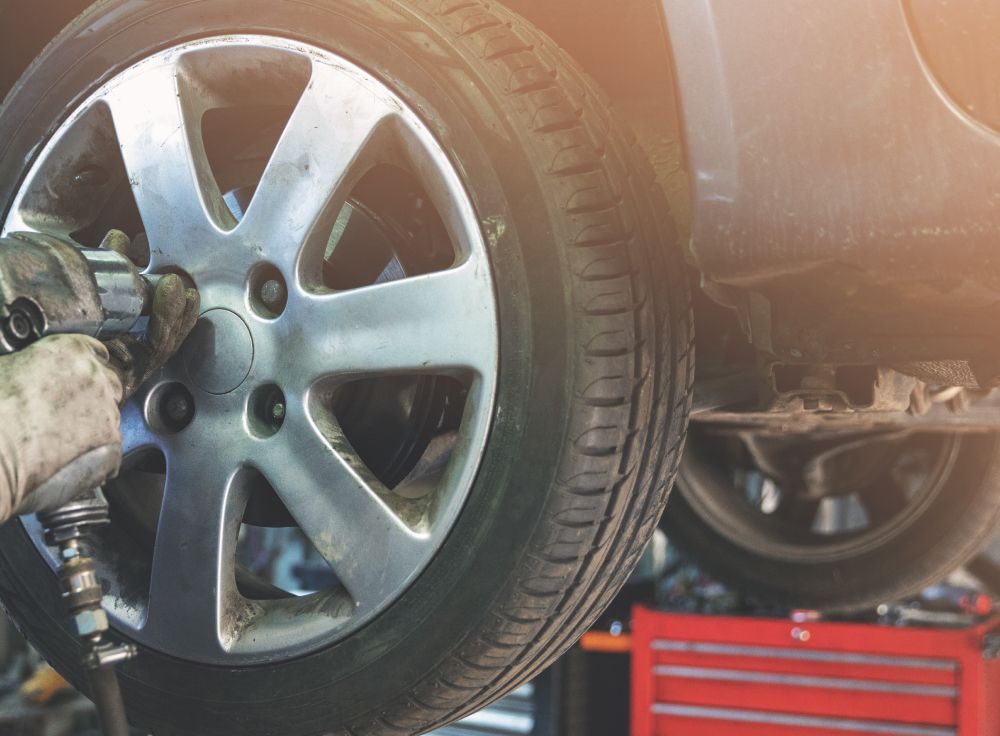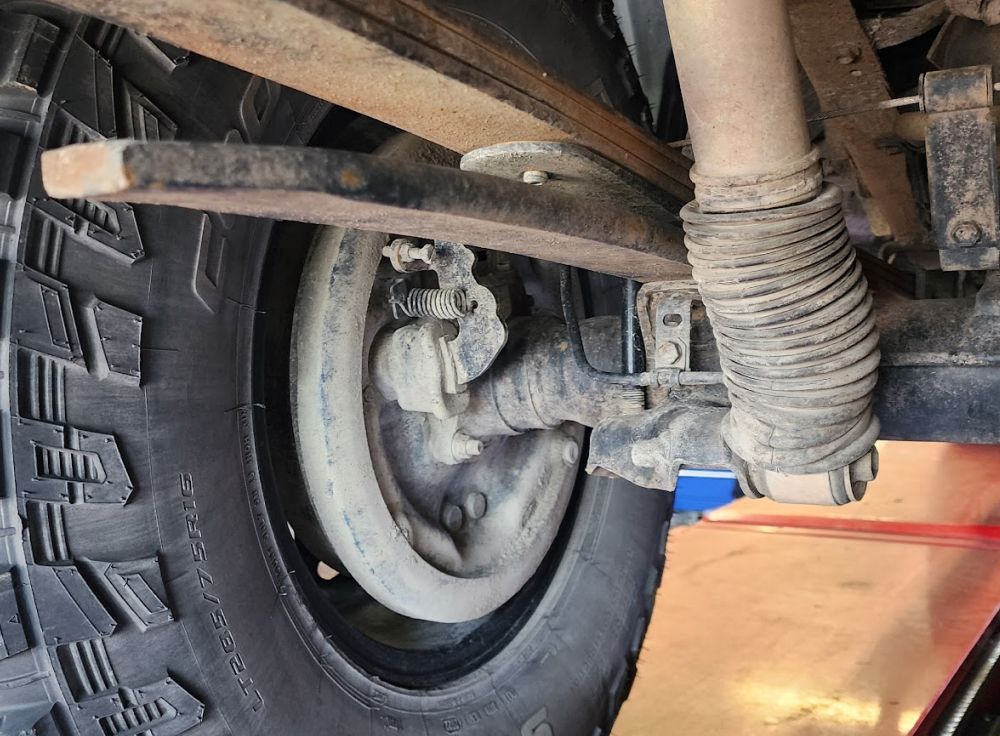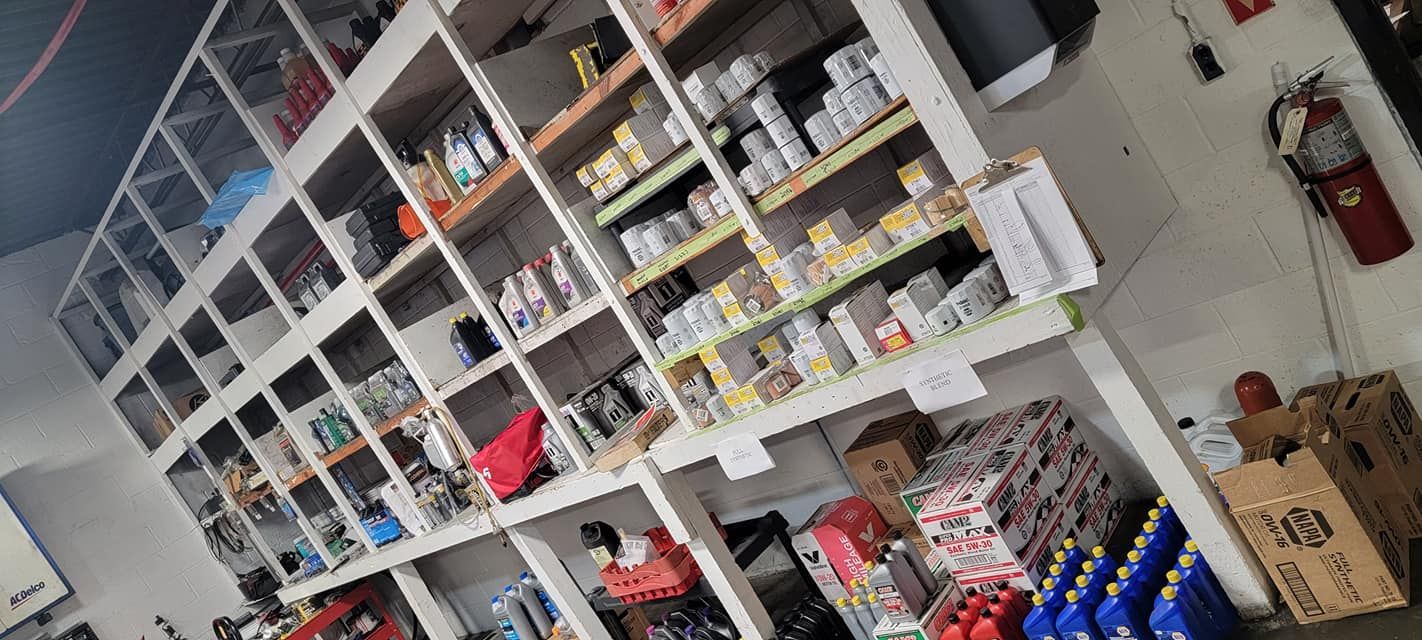Our Blog

17th Street automotive core values and excellence 17th Street Automotive using ATI (automotive training institute) core values: 1. Do the right thing 2. Bring IT every day 3. Check EGO at the door 4. Make quality personal 5. Be performance driven 6. Go the extra mile 7. Continuously improve on everything you do 8. Take Responsibility 9. Strong processes are the foundation of success 10. Honor Commitments 11. We're all in the customer service business 12. Demonstrate passion and our mission 13. Listen generously 14. Recognize the power of beliefs to influence actions 15. Speak the unvarnished truth 16. Practice blameless problem-solving 17. Set and ask for expectations 18. Embrace change 19. Appearance counts 20. Be punctual 21. Be a source for acknowledgement and appreciation 22. Be quick to ask and slow to judge 23. We are a FAMILY 24. Keep things FUN 17th Street Automotive: Auto Repair in Virginia Beach Built on Core Values When drivers search for auto repair in Virginia Beach , they’re not just looking for a quick fix. They want a repair shop they can trust —one that treats them like family, communicates openly, and delivers lasting results. At 17th Street Automotive , that’s exactly what we do. Our team lives by guiding principles that keep your experience front and center: Do the right thing – Honest, transparent repairs every time. Bring it every day – Passion, energy, and professionalism in every service. Check ego at the door – Teamwork and collaboration to solve problems quickly. Make quality personal – We treat every repair as if it were for our own family’s car. Go the extra mile – From digital inspections to Carfax updates, details matter. Continuously improve – Training on hybrids, EVs, and advanced diagnostics keeps us ahead. Strong processes, strong results – Tekmetric workflow, warranties, and safety checks keep you covered. We’re family – Customers aren’t just transactions—you’re part of our Virginia Beach community. Keep it fun – Because good service should also feel good. By staying true to these values, we’ve earned a reputation as one of the most trustworthy car repair shops in Virginia Beach . Whether you need brake service, alignments, hybrid/EV expertise, or routine maintenance, our focus is always on safety, performance, and customer care . Why Choose 17th Street Automotive? ✔ ASE-certified technicians ✔ Honest and upfront estimates ✔ Carfax-documented service ✔ 3-year/36,000-mile NAPA warranty coverage ✔ A local team that treats you like family At 17th Street Automotive, values drive everything we do . Schedule your next appointment today and experience why so many Virginia Beach drivers choose us for reliable automotive repair and maintenance .

August 26, 2025 Don't forget! Our VAA Fall Social events are happening across the state this November! Whether you’re in the mountains, the city, or by the coast, there’s a gathering near you — and we’d love to see you there. Join fellow VAA members for a casual evening of conversation, connection, and fall fun for FREE. Here’s where we’ll be: Charlottesville ️ November 6 | ⏰ 6–8 PM Three Notch’d Brewery Warrenton ️ November 6 | ⏰ 6–8 PM 4J’s Farm Richmond ️ November 20 | ⏰ 6–8 PM The Park RVA Virginia Beach ️ November 20 | ⏰ 6–8 PM Beachside Social Club ️RSVP now and reserve your spot! We can’t wait to reconnect and celebrate the season with you. Sincerely, Virginia Automotive Association
Expert A/C & Heat Service by 17th Street Automotive in Virginia Beach, VA. Optimal comfort and performance for your vehicle. Schedule an online appointment now!
Looking for reliable brake service in Virginia Beach? Trust 17th Street Automotive for expert insights and care. Call us today!

17th Street Automotive Re-Torque Wheel Policy Effective Date: 06/10/2024 Applies To: All Customers Receiving Wheel Removal/Reinstallation Services Purpose This policy is designed to ensure customer safety, prevent wheel-off incidents, and maintain the integrity of our service standards. Proper re-torquing after wheel installation is critical to avoid potential hazards caused by wheel nut loosening due to thermal expansion, vibration, or initial settling. When Re-Torquing Is Required Re-torquing is strongly recommended for the following services: Tire replacement or wheel rotation Brake jobs involving removal of wheels Suspension work involving wheel hub or bearing components Axle-related repairs Any reinstallation of wheels for any reason Customer Acknowledgment Process Upon service completion involving wheel removal or installation, each customer will receive a Re-Torque Reminder Form, either printed or sent digitally via email/text. The reminder includes: Torque specification for their vehicle Date of service Recommended date or mileage to return (usually within 50–100 miles or 3–7 days, whichever comes first) Waiver of liability for failure to return for re-torque Re-Torque Service Details Cost: Free of charge Time Required: 10–15 minutes, walk-ins welcome No appointment required, but customers are encouraged to call ahead if visiting during peak hours Performed by: Certified technicians using calibrated torque wrenches to manufacturer specs Customer Education At the time of service, advisors and technicians will inform customers: Why re-torquing is critical What risks are associated with skipping the re-torque That alloy wheels especially are susceptible to torque loss due to temperature and material expansion Documentation & Liabilit y All re-torque reminders and service completion notes are logged in the Tekmetric system under the customer's vehicle history Customers who choose not to return for a re-torque will have a note added to their file stating they were advised of the importance and declined or did not follow through A disclaimer is included on all relevant invoices, noting that 17th Street Automotive is not liable for wheel-related issues if the recommended re-torque is not performed Policy Sign-Off (Optional But Highly Suggested) For high-risk jobs (suspension/lift kits/custom wheels), a customer acknowledgment signature may be required, stating they understand and accept responsibility for following up with re-torque recommendations. Technician Accountability All torquing is performed with calibrated tools and logged under the tech’s ID Spot checks are done weekly to ensure calibration standards are being upheld Any issues are documented and reviewed during technician performance evaluations Policy Review Cycle This policy is reviewed every 12 months or as needed in response to new safety data, equipment updates, or legal requirements. goes here. To edit this text, click on it and delete this default text and start typing your own or paste your own from a different source.

Virginia Beach meets California Innovation. 17th Street Automotive is proud to announce a groundbreaking coast-to-coast strategic partnership with Unplugged Performance, the global leader in Tesla aftermarket performance upgrades. Based in California and known for pushing the limits of electric vehicle design and engineering, Unplugged Performance has chosen 17th Street Automotive as their official certified installer for the East Coast—bringing world-class Tesla performance upgrades straight to the heart of Virginia Beach. 🔧 Why This Partnership Matters: Tesla owners across the East Coast can now unlock the ultimate driving experience without having to ship their cars across the country. From Model S Plaid to Model Y Performance, 17th Street Automotive is equipped, trained, and certified to install aerodynamic body kits, carbon-ceramic brake systems, suspension upgrades, track packages, and more. This partnership bridges the gap between the OEM-level innovation of Tesla and the aftermarket engineering mastery of Unplugged Performance—delivered with local, hands-on service you can trust. 🏁 What We Offer as a Certified Unplugged Performance Installer: Full line of Unplugged Performance parts and packages: including lowering kits, coilovers, sway bars, and advanced suspension systems Track-tested upgrades: Designed for Plaid+ owners, track day warriors, and enthusiasts alike EV-specific installation expertise: by certified master technicians who specialize in Tesla repair, maintenance, and performance enhancement Paint-matching, fitment perfection, and aerodynamics: From carbon fiber front lips to full rear diffusers East Coast convenience**: No shipping delays, no long wait times—performance, installed locally 🌎 From the West Coast to Virginia Beach—Innovation Without Limits Unplugged Performance has built a name as the global authority in Tesla performance. Their cutting-edge technology has been featured in everything from SEMA builds to record-setting Nürburgring laps. Now, that legacy of performance comes directly to Virginia’s Tesla community through 17th Street Automotive. Whether you're looking to enhance the comfort and handling of your daily drive, or build a track-ready beast with one of Unplugged's high-performance packages, we’re ready to make it happen—right here in Virginia Beach. 🛞 Who We Are: At 17th Street Automotive, we’ve built our reputation on technical excellence, community trust, and innovation. As a NAPA Gold Certified Shop with a passion for emerging technologies, EVs, and hybrid systems, our team has always been ahead of the curve. This collaboration is the next step in our mission to offer the best for our customers—whether it runs on gasoline, lithium, or performance dreams. 💬 Let’s Build Your Tesla Together: Ready to take your Model 3, Model Y, Model S, or Model X to the next level? 👉 Visit (http://www.17thstreetauto.com) or call us at 757-425-8917 📍 We’re located at 1780 Virginia Beach Blvd, Virginia Beach, VA 23454 🔌 Schedule your Tesla performance consultation today and let’s talk about the future of your ride. Tesla performance upgrades Virginia | Tesla certified Unplugged Performance installer | Unplugged Performance East Coast | Tesla suspension lowering kit install Virginia | 17th Street Automotive Tesla | Virginia Beach Tesla mods | Model 3 coilover installation VA | Unplugged Performance dealer Virginia | Tesla body kit installer East Coast | Tesla tuning Virginia Beach Stay tuned for build showcases, customer spotlights, and before-and-after Tesla transformations. Tesla performance just got local. #UnpluggedPerformance #TeslaUpgrades #17thStreetAutomotive #TeslaPerformanceVA #VirginiaBeachEV #EVModsEastCoast #CertifiedTeslaInstaller #ModelSPerformance #Model3Upgrades #ModelYPerformanceParts #TeslaPlaidUpgrade






